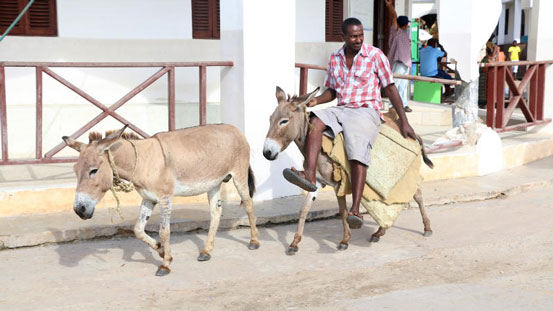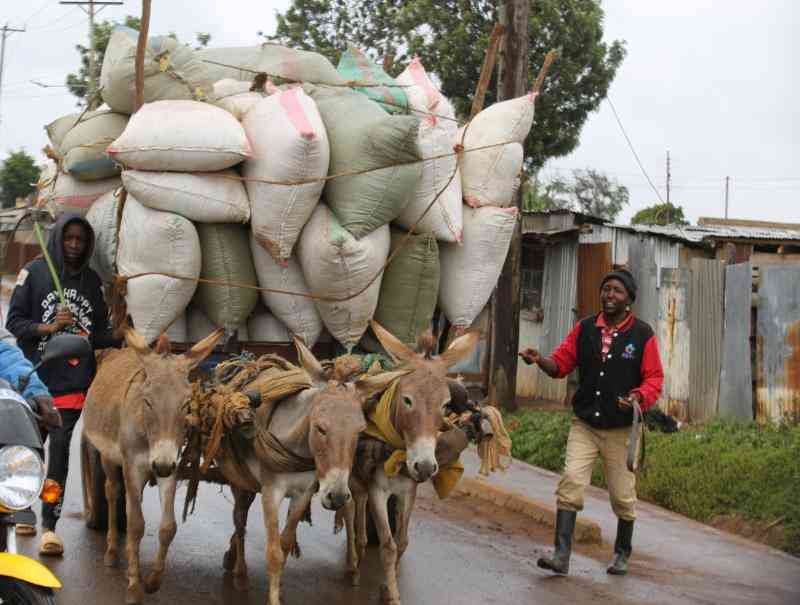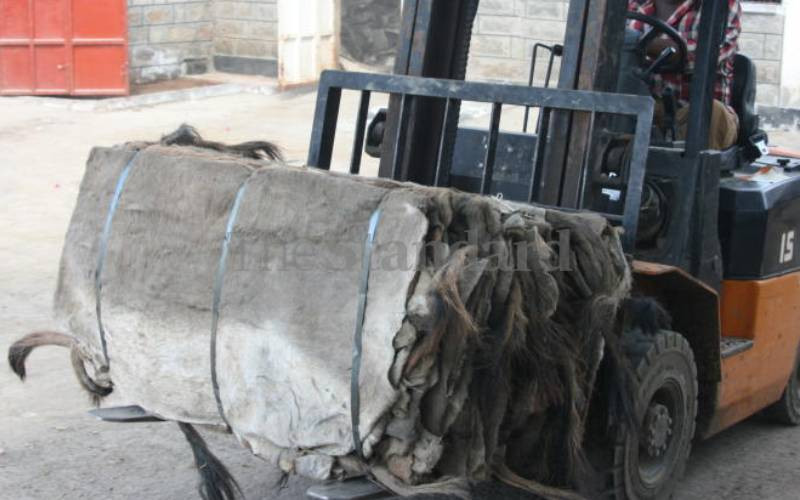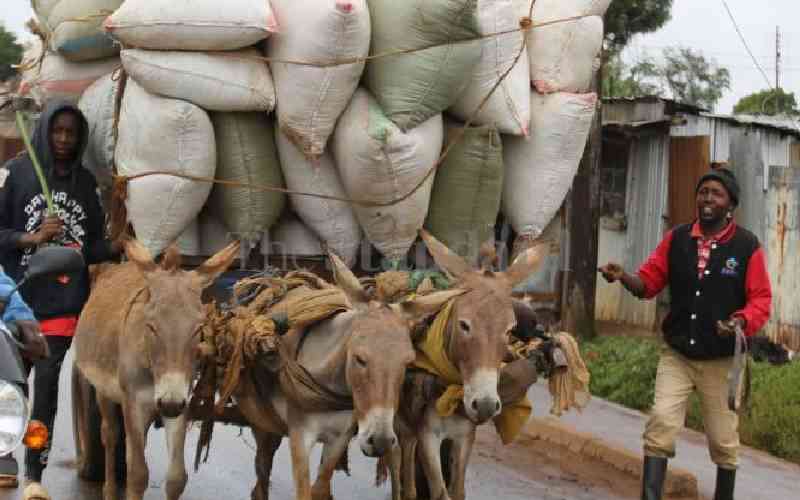
Donkeys are used as means of transport in Lamu. PHOTO:WILBERFORCE OKWIRI
- Lack of commercial donkey breeding programs-a worrisome trend, activists say
- Animal rights crusaders are alarmed by the beast of burden's dwindling numbers amid rising demand.
- China one of the countries fuelling global trade for animal products
Animal rights activists have raised the red flag over the alarming decline of donkey numbers in the country.
They blamed the trend on low reproduction levels, lack of donkey breeding programmes and the rising demand of donkey products for export.
The rising global trade in donkey hides and skins, used to manufacture anti-ageing and libido-enhancing products, has given rise to donkey trading in most African countries, including Kenya.
According to Linus Mwirigi of Tunza Punda Organisation, the demand for donkey products, especially for export to China and Middle East countries, was a major challenge in balancing the local economy and export trade.
"Besides the high number of donkeys being butchered locally for export, it is sad that there is no attention being paid to improving the numbers to sustain the trade, yet there also exists a dire need for live donkeys in the local economy," said Mr Mwirigi.
According to 2009 statistics, Kenya had 1.8 million donkeys, now believed to have reduced drastically over the past few years following the lucrative trade that has seen more than 100,000 donkeys being slaughtered in one year alone.
Mwirigi said the country's donkey population might be even lower than the reported one million, given the current rate of slaughtering by donkey abattoirs in Nairobi, Naivasha and Mogotio.
Goldox abattoir in Mogotio had promised to start breeding programmes, but this is yet to happen, one year on.
Commercial breeding
"We are still looking into options of commercial breeding of donkeys in Mogotio. Our initial plans were faced with several logistical hitches, but we are currently exploring sustainable ways of running the project," said George Ogolla, an official from Goldox.
A rising demand for donkeys, especially in the three regions, has seen a new wave of donkey theft that has prompted animal welfare organisations to team up with local communities to find solutions to the menace.
Brooke East Africa last month launched a competition dubbed Linda Punda Ushinde Challenge, an initiative aimed at stimulating practical and sustainable ideas to reduce donkey theft.
The competition brought together more than 200 donkey welfare groups to showcase the best innovations and solutions to end the vice.
Stay informed. Subscribe to our newsletter
"In just three months, nearly 1,000 donkeys have been reported stolen from the five most affected counties in Kenya - Nakuru, Narok, Kajiado, Nyandarua and Kiambu. This criminal activity is brutally cruel to the animals and leaves their owners distressed and without means to earn a living," said Brooke East Africa in a recent report.
The report blamed the spiralling cases of donkey theft on the rising demand for donkey skins in China.
"Donkey theft is dramatically increasing in Kenya. It is believed the crime is driven by the rising demand from China for donkey skins," said the report.
The National Livestock Policy estimates that 50 per cent of employment, especially in the arid and semi-arid areas, comes from the livestock sub-sector where donkeys are major economic contributors to rural economies.
Value chain
In the economic value chain, donkeys are used for transport, in agriculture and to support the tourism and hotel industry.
According to research conducted in 2013 by Brooke East Africa and the Kenya Network for Dissemination of Agricultural Technologies titled 'Voices of Women', donkeys were ranked first in three counties compared to other livestock for their role in helping with household chores and caring for other livestock as they carry fodder and water for other animals.
The women said donkeys contributed heavily to their daily incomes.
The study was conducted in Kiambu, Kirinyaga and Nyandarua counties.
 The Standard Group Plc is a
multi-media organization with investments in media platforms spanning newspaper
print operations, television, radio broadcasting, digital and online services. The
Standard Group is recognized as a leading multi-media house in Kenya with a key
influence in matters of national and international interest.
The Standard Group Plc is a
multi-media organization with investments in media platforms spanning newspaper
print operations, television, radio broadcasting, digital and online services. The
Standard Group is recognized as a leading multi-media house in Kenya with a key
influence in matters of national and international interest.
 The Standard Group Plc is a
multi-media organization with investments in media platforms spanning newspaper
print operations, television, radio broadcasting, digital and online services. The
Standard Group is recognized as a leading multi-media house in Kenya with a key
influence in matters of national and international interest.
The Standard Group Plc is a
multi-media organization with investments in media platforms spanning newspaper
print operations, television, radio broadcasting, digital and online services. The
Standard Group is recognized as a leading multi-media house in Kenya with a key
influence in matters of national and international interest.









